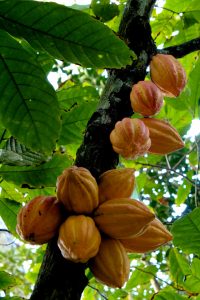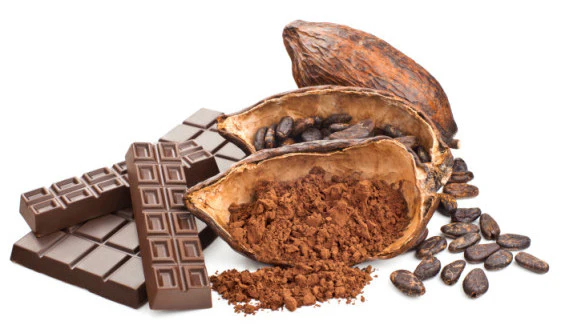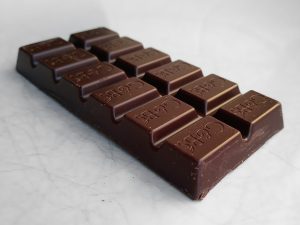The History of Chocolate: From Bitter Brew to Sweet Treat!
Ever unwrapped a chocolate bar and wondered where this deliciousness came from? The story of chocolate is a wild ride, spanning continents, cultures, and centuries. It’s a tale of ancient rituals, royal obsessions, and industrial revolutions. Forget what you think you know, because chocolate’s journey is way more fascinating than you might imagine!

From Muddy Brews to Mayan Majesty
Our chocolate adventure starts way back in time, not with candy bars, but with the cacao tree, a native of Central and South America. The earliest hints of chocolate usage come from the ancient Olmecs of southern Mexico (think 1500 B.C.!). Archaeologists have found traces of theobromine (a stimulant found in chocolate and tea) in their pottery. While we don’t have a written Olmec cookbook (sadly!), it’s believed they used cacao to make a ceremonial drink – possibly just using the pulp of the cacao pod, not even the beans!
The Olmecs passed their cacao wisdom to the Maya, and boy, did the Maya run with it! For them, chocolate wasn’t just a drink; it was practically divine. Mayan writings show chocolate popping up in celebrations, important deals, and even everyday meals. And here’s a cool fact: it wasn’t just for the elite! Chocolate was enjoyed by almost everyone in Mayan society. Imagine having a thick, frothy chocolate drink (often spiced with chili peppers!) with every meal. Sounds pretty good, right?

The Aztecs: Chocolate = Gold (Literally!)
Next up, the Aztecs, who took chocolate appreciation to a whole new level. They believed cacao was a gift from the gods. Like the Maya, they loved their spiced chocolate drinks (called xocolatl), but they also used cacao beans as currency. That’s right, cacao beans were more valuable than gold!
Xocolatl was mostly a luxury for the upper class, though everyone got to enjoy it occasionally. The Aztec ruler Montezuma II was supposedly a xocolatl fanatic, drinking gallons of it for energy (and, ahem, other “benefits”). He even kept a stash of cacao beans just for his army!
Chocolate Conquers Europe (and Gets a Makeover)
So, how did chocolate make its way to Europe? The stories are a bit murky. Some say Christopher Columbus brought cacao beans back to Spain in 1502. Others credit Hernan Cortes, who learned about it from Montezuma’s court. There’s even a tale about friars gifting cacao beans to King Philip II of Spain.
Whatever the route, by the late 1500s, chocolate was a hit with the Spanish court. Spain started importing it, and soon, chocolate fever spread across Europe. This led to the dark side of chocolate’s history: the establishment of cacao plantations, often reliant on the brutal labor of enslaved people.
The Europeans, however, weren’t content with the traditional Aztec recipe. They added sugar, cinnamon, and other spices, creating their own versions of hot chocolate. Fashionable “chocolate houses” sprung up in cities like London and Amsterdam, catering to the wealthy.
Chocolate Hits the American Colonies (and Fuels a Revolution!)
Chocolate made its way to America via a Spanish ship in 1641, landing in Florida. The first American chocolate house opened in Boston in 1682. By the 1770s, cocoa beans were a major import, and chocolate was enjoyed by all social classes.
During the Revolutionary War, chocolate was so valuable it was used as rations for soldiers, and sometimes even as payment! (Chocolate rations continued to be important even through World War II.)

The Chocolate Revolution: From Drink to Bar
For a long time, chocolate was primarily a beverage. Then, in 1828, a Dutch chemist named Coenraad van Houten made a game-changing discovery. He figured out how to treat cacao beans to create powdered chocolate that mixed easily with water – this was “Dutch processing.”
Van Houten (or possibly his father) also invented the cocoa press, which separated cocoa butter from roasted beans. This made cocoa powder cheaper and easier to produce, opening the door for mass-produced chocolate.
But it was still mostly a drink. The first chocolate bar as we know it appeared in 1847, thanks to British chocolatier J.S. Fry and Sons. Then, in 1876, Swiss chocolatier Daniel Peter added dried milk powder, creating milk chocolate! He teamed up with Henri Nestlé (yes, that Nestlé), and milk chocolate went mainstream.
Finally, another Swiss chocolatier, Rudolf Lindt, invented the “conch” machine in 1879. This machine aerated the chocolate, giving it that smooth, melt-in-your-mouth texture we all love.
Chocolate Today: From Bean to (Ethical) Bar
By the late 19th and early 20th centuries, companies like Cadbury, Mars, and Hershey were churning out chocolate confections. Today, most chocolate is mass-produced, but some artisans still create handcrafted chocolates with pure ingredients.
And while a regular chocolate bar might not be a health food, dark chocolate has earned a reputation for its antioxidants and heart-healthy benefits.
However, it’s important to remember the ethical side of chocolate. Modern production can involve low wages, child labor, and deforestation. That’s why there’s a growing movement towards fair-trade chocolate, which is produced in a more sustainable and ethical way.
So, the next time you enjoy a piece of chocolate, take a moment to appreciate its incredible journey. It’s a story of ancient civilizations, royal courts, scientific breakthroughs, and a global industry. And remember to choose your chocolate wisely, supporting producers who prioritize fairness and sustainability!

